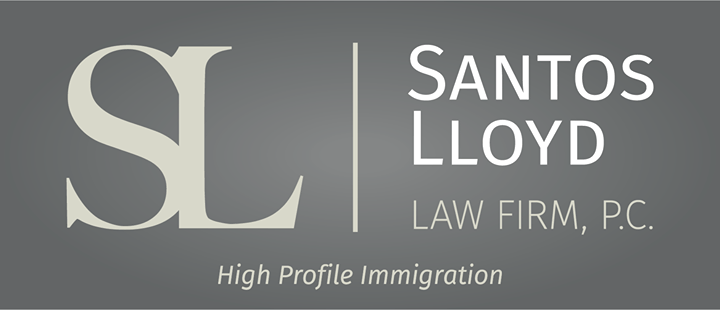Politiques en matière de travail à distance - Puis-je travailler à distance aux États-Unis avec mon visa?
Monica Zafra • August 30, 2023
Click here to read this article in English
Le facteur le plus important pour travailler à distance aux États-Unis est l'obtention d'une autorisation de travail en bonne et due forme. La loi américaine sur l'immigration exige que toute personne qui gagne un revenu aux États-Unis dispose d'une autorisation de travail en bonne et due forme.
Que se passe-t-il si je gagne un revenu pour un employeur étranger alors que je suis aux États-Unis ?
Même si le travailleur travaille pour un employeur à l'étranger, le fait de travailler pendant qu'il se trouve physiquement aux États-Unis est toujours considéré comme un travail par le gouvernement américain, même si le travailleur est payé sur un compte bancaire à l'étranger. Par exemple, si un détenteur de visa B-1/B-2 se rend aux États-Unis pour le tourisme ou à des fins professionnelles spécifiques, il peut entrer aux États-Unis pour passer des vacances ou assister à des réunions ou à des événements, mais il ne peut pas travailler aux États-Unis, car le visa B-1/B-2 n'accorde pas d'autorisation de travail.
Comment puis-je travailler à distance ?
Il n'existe pas de catégorie de visa désignée pour les travailleurs à distance aux États-Unis, mais il existe des visas de non-immigrant qui sont flexibles. Les visas de travail non immigrants tels que E, L, TN, F-1, OPT, P-1 et O-1 ne sont pas soumis à des restrictions quant au lieu de travail, contrairement à d'autres visas, et il existe une certaine flexibilité en ce qui concerne le travail à distance. Par exemple, les athlètes P-1 peuvent voyager pour travailler en raison de leur profession, ou les professionnels O-1 également, mais ils doivent le faire dans les limites de leur visa.
Quels sont les travailleurs soumis à des restrictions en matière de travail à distance ?
Les travailleurs H-1B ne peuvent travailler que dans les lieux énumérés dans leur demande de parrainage H-1B. Cela est dû à l'exigence de la demande de conditions de travail (LCA) et à l'analyse des salaires en vigueur. Parfois, les travailleurs H-1B peuvent être amenés à travailler "occasionnellement à distance" à la demande de leur employeur. C'est le cas lorsque l'adresse du domicile du travailleur H-1B est proche et que le lieu de travail normal indiqué dans la LCA de l'employeur comprend l'adresse du domicile. Cette situation peut également se produire si le travailleur H-1B est amené à travailler à une distance importante du lieu de travail indiqué dans le LCA. Des demandes de modification et des frais de dépôt peuvent également être exigés.
Pour les parrainages H-1B, il peut être utile pour les employeurs d'inclure comme lieu de travail l'adresse du domicile de l'employé et le lieu de travail habituel, si cela est possible. L'USCIS a annulé deux notes directives concernant les placements sur des sites tiers et les itinéraires connexes pour les travailleurs H-1B, de sorte qu'il est plus facile d'indiquer l'adresse du domicile et le lieu de travail d'un travailleur H-1B.
Si vous avez des questions concernant ces informations, veuillez contacter nos bureaux.
Ce blog n'est pas destiné à fournir des conseils juridiques et rien ici ne doit être interprété comme établissant une relation avocat-client. Veuillez prendre rendez-vous avec un avocat spécialisé en droit de l'immigration avant d'agir sur la base de toute information lue ici.
Monica Zafra
Similar Posts

What is E-Verify+? E-Verify+ is the newest version of E-Verify, a system run by the U.S. Department of Homeland Security (DHS) to help employers confirm the work eligibility of their employees. Effective October 21, 2024, E-Verify+ includes new features designed to streamline the employment verification process and ensure more accurate, secure results for both employers and employees. The E-Verify system checks a person’s work eligibility by comparing information from their Form I-9 (Employment Eligibility Verification) with records from DHS and the Social Security Administration (SSA). E-Verify+ takes this process further with enhanced capabilities and updated features, which make verification faster, more reliable, and more user-friendly. What’s New in E-Verify+? Automated Work Authorization Extensions For employees who are renewing work authorization, E-Verify+ can now provide automatic updates if the renewal process is delayed. This minimizes disruptions for both employers and employees, ensuring that work authorization continues as long as the renewal is in process. Enhanced Accuracy with Biometric Verification One of the key updates in E-Verify+ is biometric verification, which uses fingerprints or other biometrics to confirm an employee’s identity more accurately. This feature is expected to reduce identity theft and improve the reliability of work authorization checks. Simplified Case Management System E-Verify+ includes an updated case management system that allows employers to resolve discrepancies and update information more efficiently. For instance, if there is a mismatch between an employee’s Form I-9 and government records, E-Verify+ will guide employers on next steps to quickly address the issue. Integration with EAD (Employment Authorization Document) Updates Employees applying for Employment Authorization Documents (EAD) will find that E-Verify+ now includes an integration feature that tracks the status of EAD renewals and provides employers with updates on pending applications. What Does This Mean for Employers? With E-Verify+, employers benefit from a more efficient and reliable employment verification process. Employers who participate in E-Verify+ are better equipped to avoid penalties for hiring unauthorized workers while also reducing administrative burdens associated with verification. The system’s enhanced automation helps streamline the hiring process, which can save time and resources for businesses. What Does This Mean for Employees? For employees, E-Verify+ provides greater security and transparency. Automated work authorization extensions can help prevent employment gaps due to delays in authorization processing, which is especially important for those relying on renewals. Additionally, the use of biometrics means employees can be assured that their personal identity is protected during verification. If you want to find out more about E-Verify or want to better understand the employment verification process, please contact one of our experienced Immigration Attorneys!

The answer to the question above is, depending on your circumstances, yes! USCIS has established very clear criteria for when a request to expedite a pending travel permit application can be made. These criteria include: Severe financial loss to a company or person, provided that the need for urgent action is not the result of the petitioner’s or applicant’s failure to: Timely file the benefit request, or Timely respond to any requests for additional evidence; A company can demonstrate that it would suffer a severe financial loss if it is at risk of failing, losing a critical contract, or having to lay off other employees. For example, a medical office may suffer severe financial loss if a gap in a doctor’s employment authorization would require the medical practice to lay off its medical assistants. Job loss may be sufficient to establish severe financial loss for a person, depending on the individual circumstances. For example, the inability to travel for work that would result in job loss might warrant expedited treatment. The need to obtain employment authorization by itself, without evidence of other compelling factors, does not warrant expedited treatment. In addition, severe financial loss may also be established where failure to expedite would result in a loss of critical public benefits or services. Emergencies and urgent humanitarian reasons; In the context of an expedite request, humanitarian reasons are those related to human welfare. Examples may include, but are not limited to, illness, disability, extreme living conditions, death in the family, or a critical need to travel to obtain medical treatment in a limited amount of time. An emergency may include an urgent need to expedite employment authorization for healthcare workers during a national emergency such as the COVID-19 pandemic. Nonprofit organization (as designated by the Internal Revenue Service) whose request is in furtherance of the cultural or social interests of the United States; A nonprofit organization seeking to expedite a beneficiary’s benefit request must demonstrate an urgent need to expedite the case based on the beneficiary’s specific role within the nonprofit in furthering cultural or social interests (as opposed to the organization’s role in furthering social or cultural interests). Examples may include a medical professional urgently needed for medical research related to a specific social U.S. interest (such as the COVID-19 pandemic or other socially impactful research or project) or a university professor urgently needed to participate in a specific and imminent cultural program. Another example is a religious organization that urgently needs a beneficiary’s specific services and skill set to continue a vital social outreach program. U.S. government interests (such cases identified as urgent by federal agencies such as the U.S. Department of Defense, U.S. Department of Labor, National Labor Relations Board, Equal Opportunity Commission, U.S. Department of Justice, U.S. Department of State, U.S. Department of Homeland Security, or other public safety or national security interests); or U.S. government interests may include, but are not limited to, cases identified as urgent by other government agencies, including labor and employment agencies, and public safety or national security interests. Clear USCIS error. Not every circumstance that fits in one of these categories will result in expedited processing; expedite requests are discretionary, highly subjective and never guaranteed. Expedite requests are initiated by calling the USCIS contact center and providing your case Receipt Number and reasons for the request. The approximate processing time for an expedite request is 7-10 business days. When you call to request expedited processing, the USCIS Contact Center creates and forwards a service request to the office with jurisdiction over your application or petition. After receiving the service request, the reviewing office may request additional documentation to support expedited processing. A decision on an expedite request is not an approval or a denial of the underlying benefit request. The expedite decision simply informs the requestor whether USCIS will take the benefit request out of date order and issue a decision (approval or denial) faster than the normal processing time.

In years past, spouses of certain E and L visa categories were required to apply for and receive an Employment Authorization Document in order to work in the United States. However, as the result of a settlement reached by USCIS in the class action lawsuit Shergill v. Mayorkas on November 10, 2021, USCIS now considers E and L dependent spouses to be authorized for employment incident to their status.

Once you have connected with a college program, have been admitted to the school, and deemed eligible to compete athletically, you will need to secure an F-1 student visa in order to actually attend your new college and begin your time as a student athlete. The first step in the visa process is to receive your Form I-2

For many talented athletes around the world, U.S. college athletics represent a remarkable opportunity to combine elite athletic competition with higher education. In sports such as basketball, soccer, track and field, and tennis, among others, hundreds of colleges and universities across the United States offer struct

Under the new regulation, if a person filed or files Form I-589, Application for Asylum and for Withholding of Removal after October 1, 2024, and the application remains pending with USCIS for 365 days, the applicant must pay an Annual Asylum Fee (AAF) on the one-year anniversary of his or her filing date.




